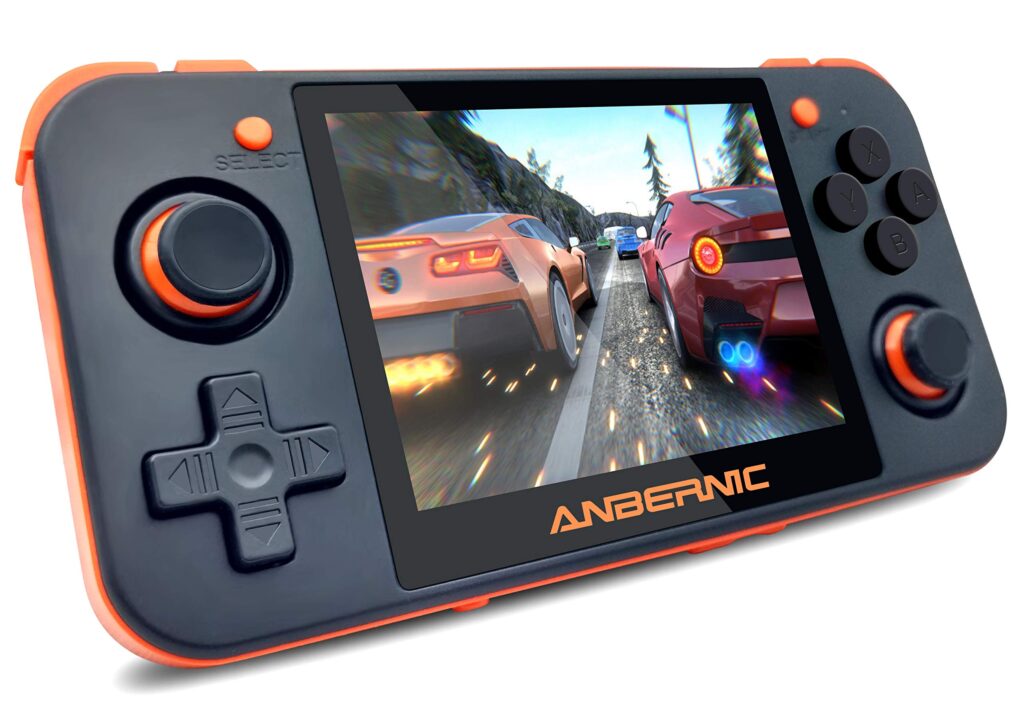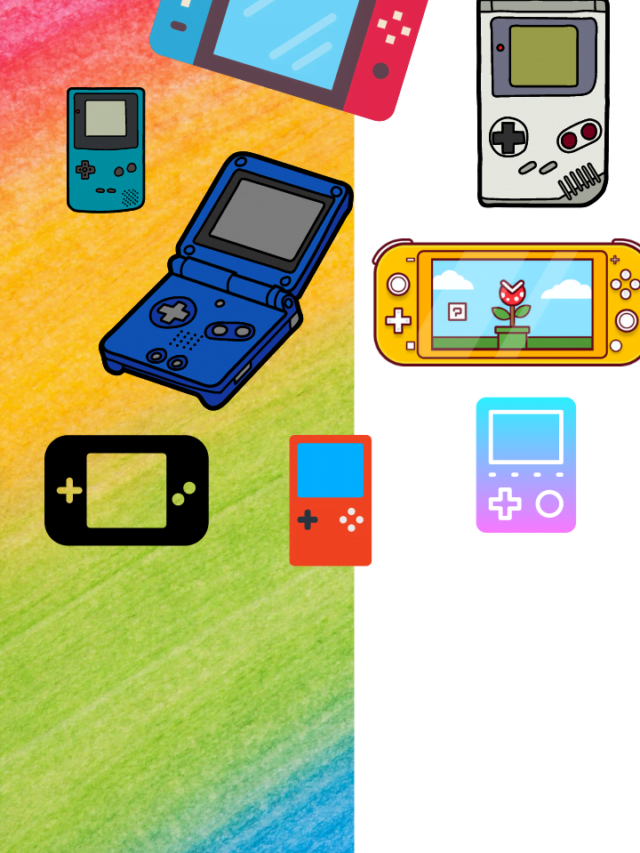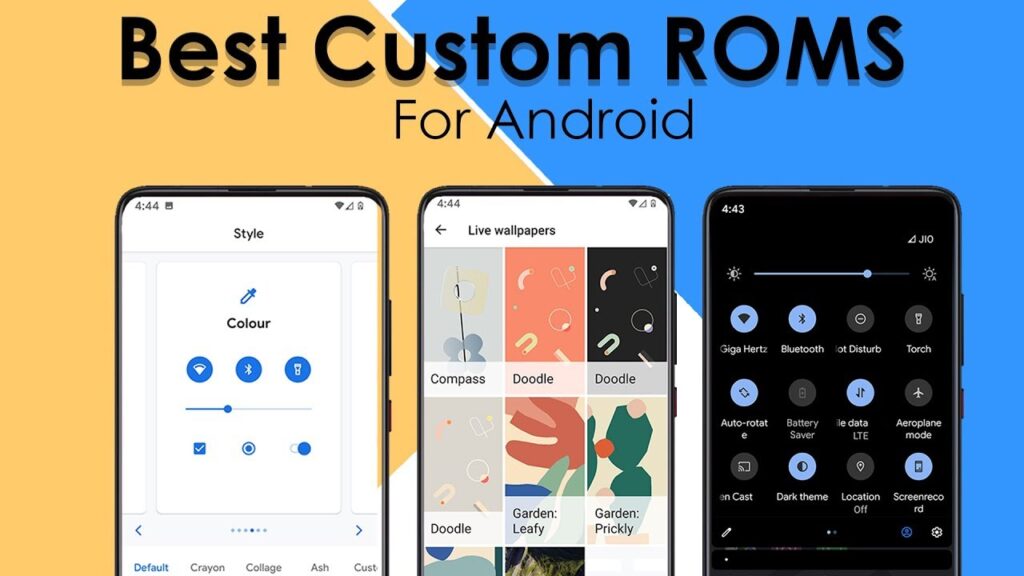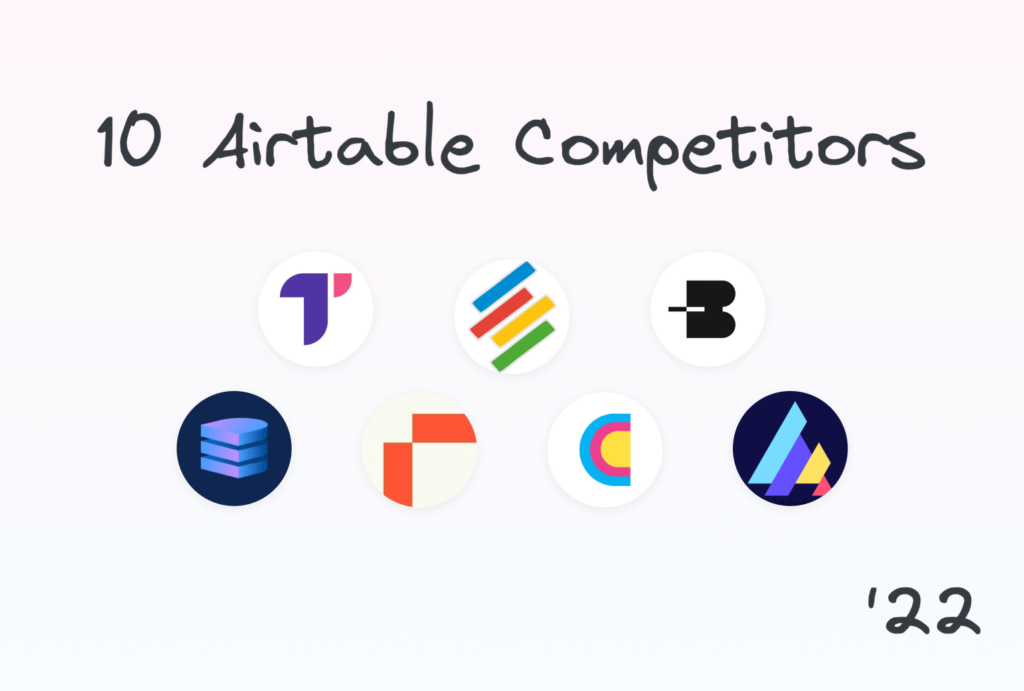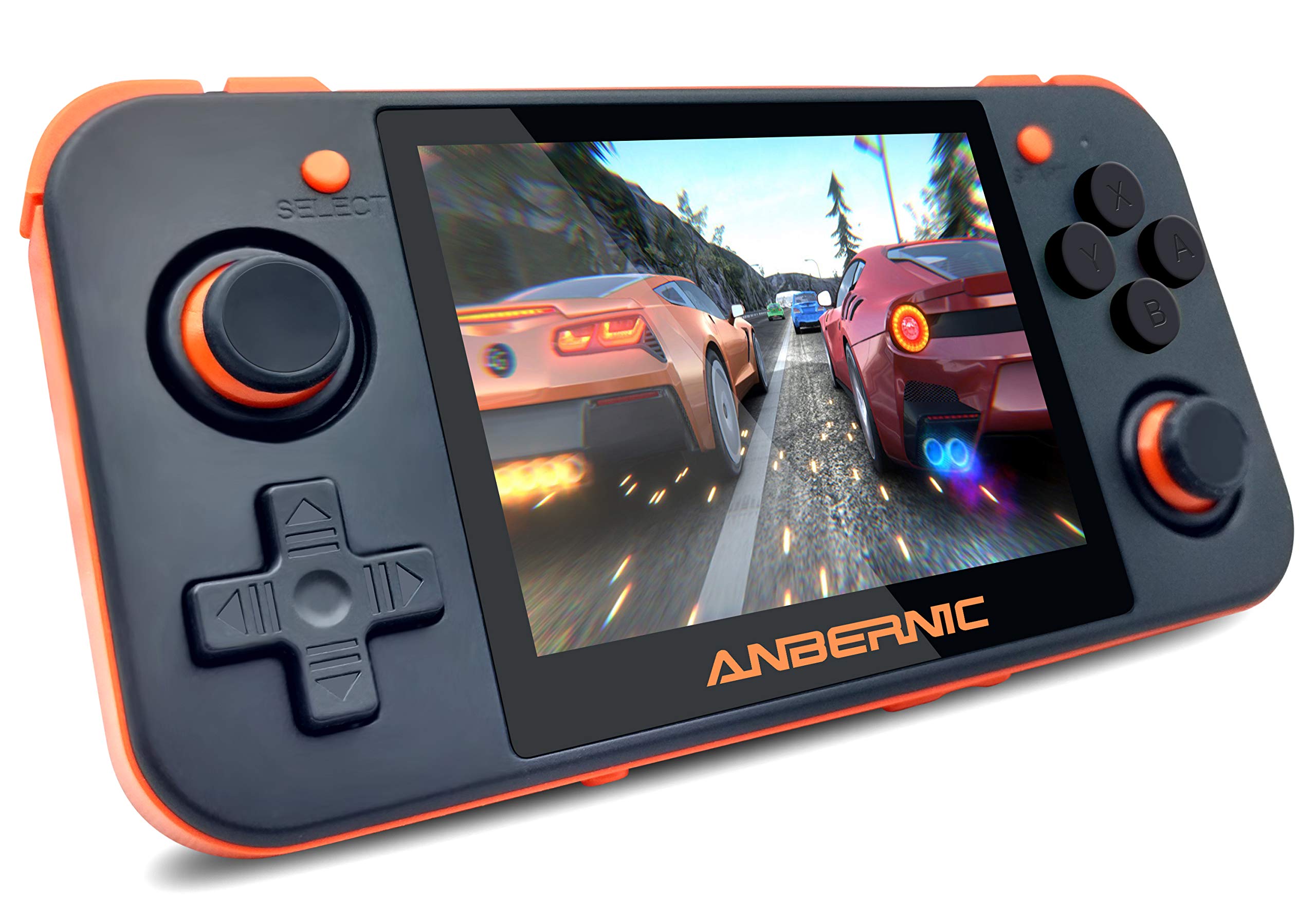
The emergence of Steam Deck, following Nintendo Switch, spurred various manufacturers to introduce their portable consoles. Over the past year, numerous models from different companies have flooded the market. Asus, notably, joined the trend with their ROG Ally. Amidst this abundance of options, selecting the perfect handheld console can pose a challenge. Hence, here are the top 10 handheld gaming consoles available for purchase:
1. Steam Deck
| Specifications | Details |
|---|---|
| Display | 16:10 7-inch 1200x800p IPS @ 60Hz |
| Storage and RAM | 64GB eMMC, 256GB, 512GB NVMe M.2 2230; 16GB LPDDR5 RAM |
| GPU | AMD Aerith Custom APU (4-15W) |
| Operating System | Steam OS by default; Windows compatible |
| Hall Triggers / Joysticks | No/No |
| Battery | 40Wh |
| I/O | 1 x Type-C USB 3.2 Gen 2, microSD slot, 3.5mm headphone jack |
| Price | $399, $549, $649 |
The handheld gaming console industry appeared nearly defunct, overshadowed by Nintendo Switch, until Valve introduced the Steam Deck. While some scrutinized its technical specifications, many were drawn to its remarkably low price, starting at just $399. Valve openly acknowledged selling the console at a loss, offsetting it through game sales commissions on the Steam Store. A strategic move indeed.
Valve teamed up with AMD to develop the Steam Deck’s APU, striking an optimal balance between performance and efficiency, surpassing later competitors’ handhelds. Unsurprisingly, Valve has sold 3 million units and continues to enhance the Deck.
Steam Deck runs Arch Linux; not every game might run. If you don’t like OS tinkering, it may not be for you. However, for Linux enthusiasts and dreamt-of Linux gamers, it’s a perfect handheld-cum-computer.
| Pros | Cons |
|---|---|
| Incredibly value for money | Cannot play all Steam library games |
| Can play AAA titles with ease | The display isn’t great |
| Decent battery life | |
| Highly repairable |
2. Asus ROG Ally
| Specifications | Details |
|---|---|
| Display | 16:9 7-inch 1080p IPS @ 120Hz |
| Storage and RAM | 512GB, 1TB NVMe; 16GB LPDDR5 RAM |
| GPU | AMD Z1/Extreme APU |
| Operating System | Windows |
| Hall Triggers / Hall Joysticks | Yes/No |
| Battery | NA |
| I/O | Type-C USB 4 with ASUS’s eGPU connector, microSD card slot, headphone jack |
| Price | $599, $699 (Rumored) |
Many manufacturers dubbed their handheld consoles as Steam Deck killers, but none rival gaming on the Steam Deck like the ROG Ally. We’d argue that Ally even outperforms the Deck in some scenarios, but its major flaw is battery life. The ROG Ally features a 1080p 7-inch IPS touchscreen display with a 120Hz refresh rate, AMD Ryzen Z1 and Z1 Extreme processors with RDNA 3 graphics, 16GB RAM, and 512GB storage in the base variant. Additionally, it runs Windows 11 with ASUS’s ROG gaming aesthetics layered on top.
Similar to the Steam Deck, it’s a portable computer with attached controls. AMD’s Z1 Extreme, designed specifically for handhelds rather than notebooks, is anticipated to outperform Steam Deck’s Aerith APU at various TDP levels. Unlike the Steam Deck, it will support a broader range of games at launch due to its Windows 11 compatibility. With the official price of ROG Ally 2 now at $700, the Steam Deck appears to offer better value.
Ayaneo 2: Streamlined Excellence
| Pros | Cons |
|---|---|
| Seamless AAA Gaming | Pricey |
| Wide Game Compatibility | No Trackpads |
| High Refresh Rate Display | |
Specifications
| Category | Details |
|---|---|
| Display | 16:9 7-inch 1200p IPS @ 60Hz |
| Storage/RAM | PCIe 4.0 512GB, 1TB, 2TB NVMe; 16/32GB LPDDR5 |
| GPU | AMD Radeon 680M |
| Operating System | Windows/Ayaneo OS |
| Hall Triggers/Joysticks | Yes |
| Battery | 50.25Wh |
| I/O | 2 x Type-C USB 4, microSD slot, headphone jack |
| Price | $1099-$1499 |
Ayaneo pioneered alternatives to Steam Deck, starting with the original model in 2021. Since then, the company has introduced various portable consoles, including the Ayaneo Air, Air Pro, Next, and more. The latest addition, Ayaneo 2, largely impresses with its exceptional build quality.
Powered by the AMD Ryzen 7 6800U with Radeon 680M graphics, the console supports gaming at 1080P in low to medium settings. It outpaces Steam Deck’s Aerith APU slightly, thanks to higher compute unit clock speeds (2.2GHz vs 1.6GHz). Additionally, it boasts a higher TDP of up to 25W, fueled by a 50Whr battery.
The Ayaneo 2 base variant offers 16GB LPDDR5 6400MHz RAM and a 512GB PCIe NVMe drive, expandable via M.2 2280. Priced at $1,100, it may not be affordable. Experts may prefer the Steam Deck. However, if you can afford it, you won’t regret the purchase.
What sets the Ayaneo 2 apart are its features: hall joysticks and triggers, glass front, eGPU support via USB 4, a 1200p display, haptics akin to the Nintendo Switch, and a bezel-less display, all justifying the price.
AyaNeo Geek Review
| Pros | Cons |
|---|---|
| Plays AAA titles effortlessly | Costlier compared to alternatives |
| Windows supports non-Steam games | |
| AyaSpace offers unique software features | |
| Includes hall effect joysticks and triggers | |
| Features faster RAM, eGPU support via USB 4, and a 1200p screen |
Specifications
| Category | Details |
|---|---|
| Display | 16:9 7-inch 800/1200p IPS @ 60Hz |
| Storage and RAM | PCIe 3.0 512GB, 1TB, 2TB NVMe; 16/32GB LPDDR5 |
| GPU | AMD Radeon 680M |
| Operating System | Windows/AyaNeo OS |
| Hall Triggers / Joysticks | Yes |
| Battery | 50.25Wh |
| I/O | 2 x Type-C USB 4, microSD slot, headphone jack |
| Price | $949 – $1369 |
The Ayaneo Geek shares the same processor as the Ayaneo 2 but with a few distinctions. It comes in 1200p/800p variants, lacks the two-axis haptic motor, and supports PCIe 3.0 standard, unlike the Ayaneo 2’s PCIe 4.0 standard. The Geek is thicker and taller compared to the Ayaneo 2.
Ayaneo markets it as a budget option, priced at $949 for the base variant featuring an 800p screen, 16GB RAM, and 512GB memory, which is reasonable. The $100 price gap means sacrificing PCIe 4.0 and a Full-HD screen. Considering this, investing $100 more for the Ayaneo 2 handheld gaming console seems worthwhile. Nevertheless, if your budget is capped at sub-$1,000 and you don’t require a Steam Deck, the Ayaneo Geek is worth considering.
| Pros | Cons |
|---|---|
| Can play AAA titles easily | Costlier than counterparts |
| Windows supports non-Steam games from other launchers | PCIe 3.0 instead of 4.0 |
| AyaSpace offers unique software features | Base variant has 800p screen |
| Hall Effect Joysticks and Triggers | – |
| Faster RAM, eGPU support via USB 4 | – |
5. OneXPlayer 2 – AMD
| Specifications | Details |
|---|---|
| Display | 16:9 8.4-inch 2.5k IPS @ 60Hz |
| Storage and RAM | PCIe 3.0 512GB, 1TB, 2TB NVMe; 16/32GB LPDDR5 RAM |
| GPU | AMD Radeon 680M |
| Operating System | Windows |
| Hall Triggers / Joysticks | Yes |
| Battery | 65.5Wh |
| I/O | 1 x Type-C USB 4, 1 x USB 3.2 Gen 2 Type-C, 1 x USB-A 3.0, microSD card slot, headphone jack |
| Price | $1099, $1199, $1299, $1499 |
OneXPlayer sells its second-gen handheld console for $1,099 with Ryzen 7 6800U. Like the Nintendo Switch, you can detach the joysticks, attach a keyboard, and use it as a laptop. Additionally, you can use the official dock for a fully-fledged console-like experience or as a tablet. It boasts a larger 65.5Wh battery to power its 2.5k 8.4-inch display. For its price, the OneXPlayer 2 is probably worth choosing over the Ayaneo Geek or Ayaneo 2.
The company also offers the OneXPlayer Mini Pro AMD, another console powered by the Ryzen 7 6800u and Radeon 680M. It features a 7-inch 1200p display, 16GB DDR5 RAM at 6400MHz, PCIe 3.0 M.2 2280 SSD slot, Hall joysticks and triggers, a 48Whr battery, and USB 4.0.
In terms of features, OneXPlayer closely resembles the Ayaneo Geek but boasts a 1200p display. Additionally, OneXPlayer provides a variant equipped with an Intel Core i7-1260P, although we advise against purchasing it unless you strongly prefer Intel over AMD. Priced at $1049, it matches the cost of the Ayaneo 2, which provides superior features and delivers a more enjoyable handheld gaming experience.
| Pros | Cons |
|---|---|
| Plays all AAA titles easily | Costlier than counterparts |
| 8-inch 2.5k display | Shorter battery life |
| Windows supports non-Steam games | Uses PCIe 3.0 instead of 4.0 |
| Detachable controllers for flexibility | |
| Hall Effect Joysticks and Triggers | |
| Faster RAM, eGPU support via USB 4, 1200p screen | |
GPD Win Max 2 2023
| Specifications | Details |
|---|---|
| Display | 16:9 10.1-inch 1080p/2.5k IPS @ 60Hz |
| Storage and RAM | PCIe 4.0 1TB, 2TB NVMe; 16/32/64GB LPDDR5x RAM. 2 x PCIe 4.0 slots. |
| GPU | AMD Radeon 760M, 780M |
| Operating System | Windows |
| Hall Triggers / Joysticks | Yes |
| Battery | 67Wh |
| I/O | 1 x Type-C USB 4, 2 x USB-A 3.0, microSD card slot, headphone jack, Oculink slot for eGPU |
| Price | $799, $1049, $1199 |
Launched in 2022, the Win Max 2 2022 was a unique handheld console. The Max 2 2023 improves specifications, featuring AMD’s latest RDNA 3 graphics in the 7000 series U chipsets. It offers two variants: one with a Ryzen 5 7640u and Radeon 760M, and the other with a Ryzen 7 7840U and Radeon 780M. The 760M has 512 shaders, compared to 768 shaders in Radeon 680M, but boasts a higher max boost clock at 2.8GHz versus 2.4GHz. Meanwhile, the 780M represents a significant upgrade from the 680M.
The Win Max 2 boasts 16GB of LPDDR5x RAM, clocked at 7500 mt/s (not MHz). It supports two M.2 SSDs (1x 2280, 1x 2230), one PCIe 4.0. With a 10.1-inch IPS display, USB 4, 67Wh battery, full QWERTY keyboard, SD card slot, and “highly efficient” cooling system, it’s feature-rich. Additionally, it integrates built-in hall joysticks, triggers, and a central trackpad.
Funded recently, the Win Max 2 isn’t immediately available for purchase but will soon be offered by official GPD e-commerce sellers. Priced at $1,200, it offers great value for those seeking both productivity and gaming on-the-go.
| Pros | Cons |
|---|---|
| Plays AAA titles easily | Expensive |
| Windows enables playing non-Steam games from other launchers | |
| Functions as a laptop with a full keyboard | |
| Hall Effect Joysticks and Triggers | |
| Fast RAM, eGPU support via USB 4, 1080p screen | |
| Dual SSD slots for added storage |
Buy GPD Win Max 2 2023 ($1,199)
7. Nintendo Switch
| Specifications | Details |
|---|---|
| Display | 16:9 7-inch 720p IPS @ 60Hz |
| Storage and RAM | 32GB eMMC; 4GB RAM |
| GPU | NVIDIA Tegra X1 |
| Operating System | Nintendo Switch OS |
| Hall Triggers / Joysticks | No |
| Battery | 16Wh |
| I/O | 1 x Type-C, microSD, headphone jack |
| Price | $349 |
Nintendo Switch, second only to Nintendo DS, reigns as the top-selling handheld gaming console. Despite its nearly six-year tenure, Nintendo revitalized it with the introduction of an OLED variant last year. Renowned for its exclusive titles from franchises like Pokemon, Legends of Zelda, and Super Mario, the Switch maintains its allure.
The Switch runs on the venerable NVIDIA Tegra X1 chipset, still remarkably capable for gaming thanks to developer optimizations. They can’t afford to skip bringing their games to a platform as vast as the Switch. However, the Tegra X1 is nearing obsolescence, struggling with current PC and Nintendo titles. Recent rumors hint at Nintendo unveiling or teasing the Switch’s successor this year.
The original Nintendo Switch is priced at $250, while the OLED model is priced at $360. The OLED model offers significant improvements over the original Switch. If you’ve decided to purchase a Switch, opting for the OLED variant is recommended. However, if you lean towards PC gaming and lack interest in Switch titles, the Steam Deck, priced at $399, is a more cost-effective option. It allows you to emulate Switch games and offers better value for money.
| Pros | Cons |
|---|---|
| Games on the OLED version look great | The Tegra X1 is outdated |
| Nintendo exclusives are top-notch | Slower eMMC storage and RAM |
| Detachable Joycons offer flexibility | Nintendo exclusives can be expensive |
Buy on Amazon ($340)
Buy on Best Buy ($350)
8. Nintendo Switch Lite
| Specifications | Details |
|---|---|
| Display | 16:9 5.5-inch 720p IPS @ 60Hz |
| Storage & RAM | 32GB eMMC; 4GB RAM |
| GPU | NVIDIA Tegra X1 |
| Operating System | Nintendo Switch OS |
| Hall Triggers / Joysticks | No/No |
| Battery | 13.6Wh |
| I/O | 1 x Type-C |
For those desiring to play Switch titles without affording the Switch, Nintendo Switch Lite offers a solution. Featuring the same Tegra X1 chipset and screen resolution as the Switch, it boasts a smaller, lighter, and more portable design. It lacks detachable joy-cons, meaning you cannot detach the joysticks to play games on a TV.
However, at an asking price of $169, it offers great value. It’s a decent console, especially for those interested in playing Switch-exclusive games. The Lite’s battery is slightly smaller than the Switch, providing 3-5 hours of playtime compared to 4-7 hours on the Switch. Overall, it stands as one of the best and most affordable handheld gaming consoles available.
| Pros | Cons |
|---|---|
| Nintendo console budget | Tegra X1 outdated |
| Nintendo exclusives top-tier | Slow eMMC storage, RAM |
| Can’t run latest PC titles; Nintendo exclusives costly | |
| Less battery life than Switch | |
| Non-detachable Joycons |
Buy on Amazon ($196.99)
Buy on Best Buy ($199.99)
9. Retroid Pocket 3
| Specifications | Details |
|---|---|
| Display | 7-inch 720p IPS @ 60Hz |
| Storage & RAM | 32GB eMMC; 4GB RAM |
| GPU | Unisoc Tiger T310 SoC |
| Operating System | Android 9.0 |
| Hall Triggers / Joysticks | No |
| Battery | 4000mAh |
| I/O | 1 x Type-C |
The Retroid Pocket 3, an Android-based console, excels in emulation. Sporting a 4.7-inch 720p display and a 4,000mAh battery, it offers a single 3+32GB variant. Powered by a basic Unisoc T310 processor, it features built-in Wi-Fi and Bluetooth, all fueled by a 4000mAh battery.
While not designed for AAA titles, the Pocket 3 handles retro games from platforms like PSP, PS2, Nintendo Wii, and DS. Running on Android, it supports emulators such as Dolphin, Citra, and PPSSPP. At just above $100, it’s a budget-friendly choice. However, if you already own a modern Android phone, purchasing the Pocket 3 may be redundant.
| Pros | Cons |
|---|---|
| Android-based, versatile gaming emulation | Subpar hardware |
| Decent display | Slow eMMC storage and RAM |
| Ideal for casual, retro gaming | Inadequate for running older demanding titles |
10. Playdate
| Specifications | Details |
|---|---|
| Display | 1-bit 400×200 black and white display |
| Storage and RAM | 4GB eMMC; 16MB RAM |
| GPU | 168MHz Cortex M7 |
| Operating System | – |
| Hall Triggers / Joysticks | No |
| Battery | 8 hours continuous usage, 14 hours standby |
| I/O | 1 x Type-C, |
Warning! If you adore spending money on adorable items, you’d find it hard to resist Playdate’s charm and design. Although the handheld is currently unavailable and scheduled to ship in late 2023, preorders are open. The console offers over 20 unique games, Wi-Fi connectivity, and requires an external USB power source.
Featuring a crank on the side for game control, alongside a D-pad and buttons A and B, the console boasts a non-backlit black-and-white screen, consuming minimal power. It operates on what’s termed “Seasons,” delivering two new games weekly for 12 weeks upon setup.
In the future, the manufacturer will also sell a stereo dock for your Playdate, enabling it to function as a clock, speaker, and pen holder. While not the top gaming handheld available, it’s excellent hardware for moments of relaxation, prompting reflection on gaming’s evolution.
| Pros | Cons |
|---|---|
| Unique pocketable console | Expensive relative to its offerings |
| Sleek design | |
| Includes free games with weekly additions |
Buy Playdate ($199)
Bonus: Razer Kishi V2 for Android
The Kishi V2 isn’t a handheld gaming console, but it can convert your phone into one. Gaming phones are still trending, and not everyone can afford them. If you already own a capable phone like Nubia Red Magic or Xiaomi Black Shark, it wouldn’t be wise to spend more money on redundant features when you can opt for the Razer Kishi V2 to experience console-like gaming. It offers a universal fit, compatible with any phone featuring a USB type-C port.
A passthrough type-C port charges your phone during gameplay, and the app lets you browse games, record them, and customize the Kishi V2. If your phone is under 11.5 mm thick (including the camera) and under 170mm long, the Kishi V2 fits with no issues. At $99, it’s a great gadget for your Android device, transforming it into a fully-fledged gaming console. If you seek a more affordable option, consider the GameSir X2 Pro ($80, Buy on Amazon), equally impressive.
| Pros | Cons |
|---|---|
| Portable | Somewhat pricey |
| Intuitive controls | |
| Compatible with various Android devices via Type-C port |
Have we overlooked any handheld gaming consoles you believe should be added? Share your suggestions in the comments below.

Pritam Chopra is a seasoned IT professional and a passionate blogger hailing from the dynamic realm of technology. With an insatiable curiosity for all things tech-related, Pritam has dedicated himself to exploring and unraveling the intricacies of the digital world.

